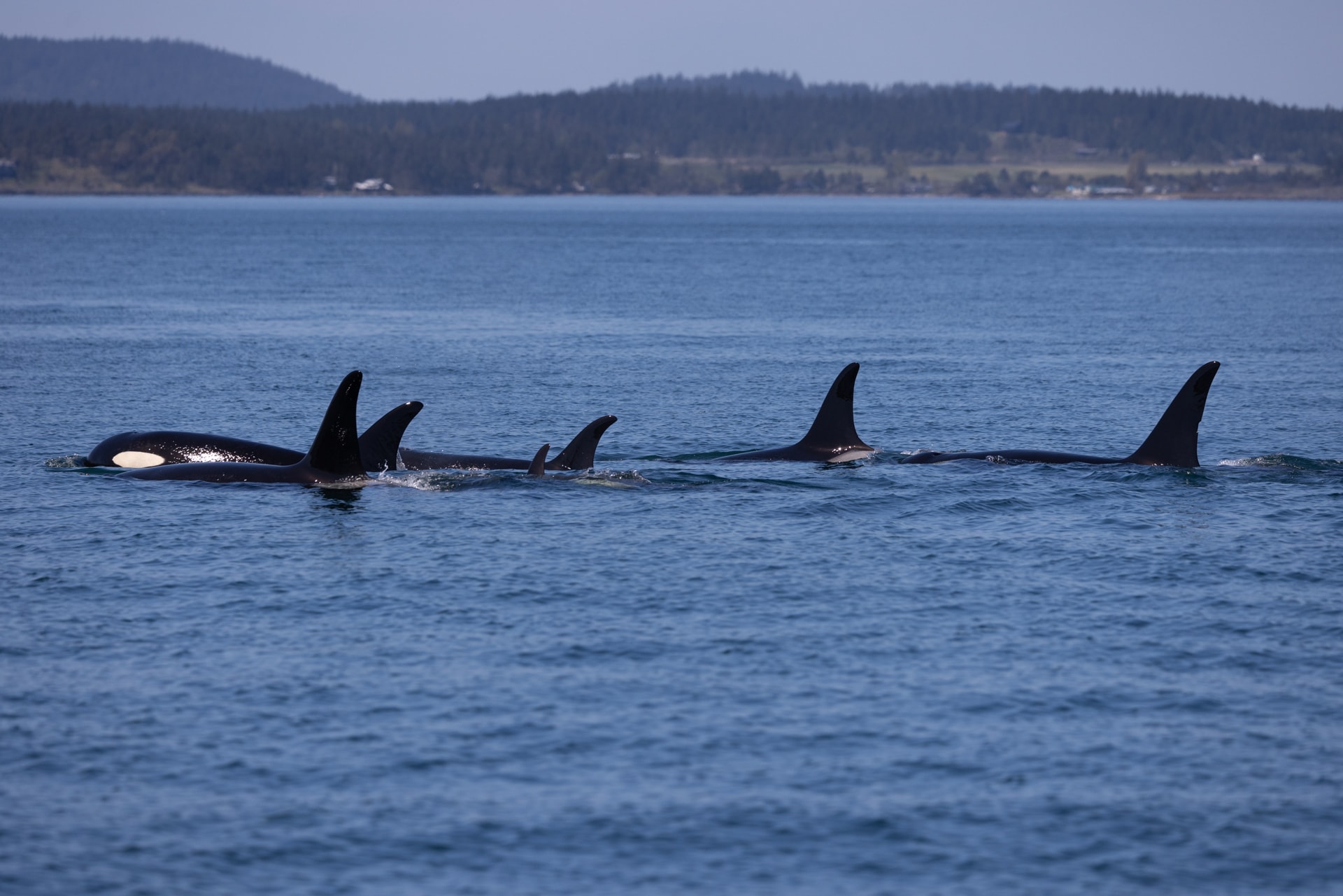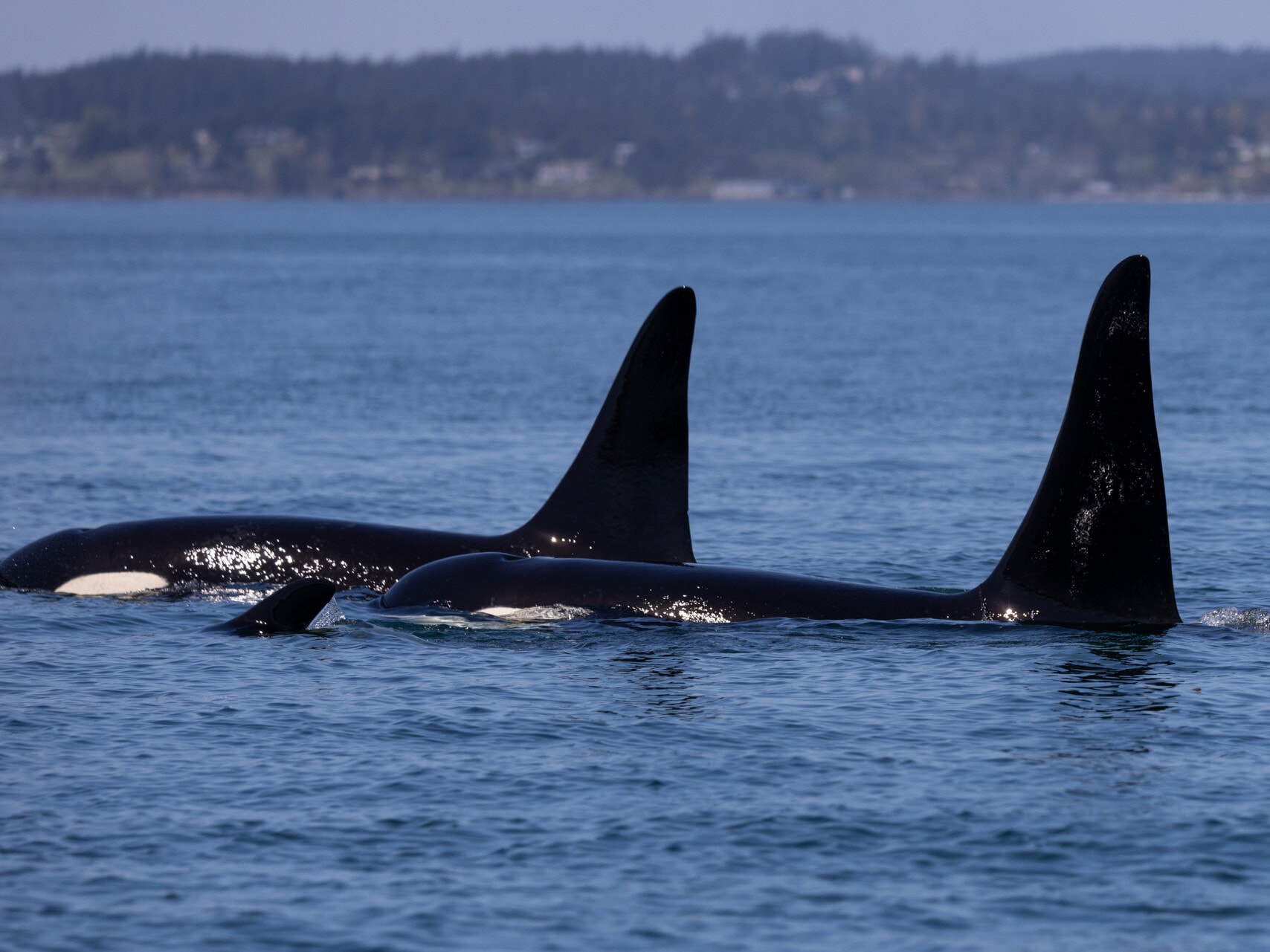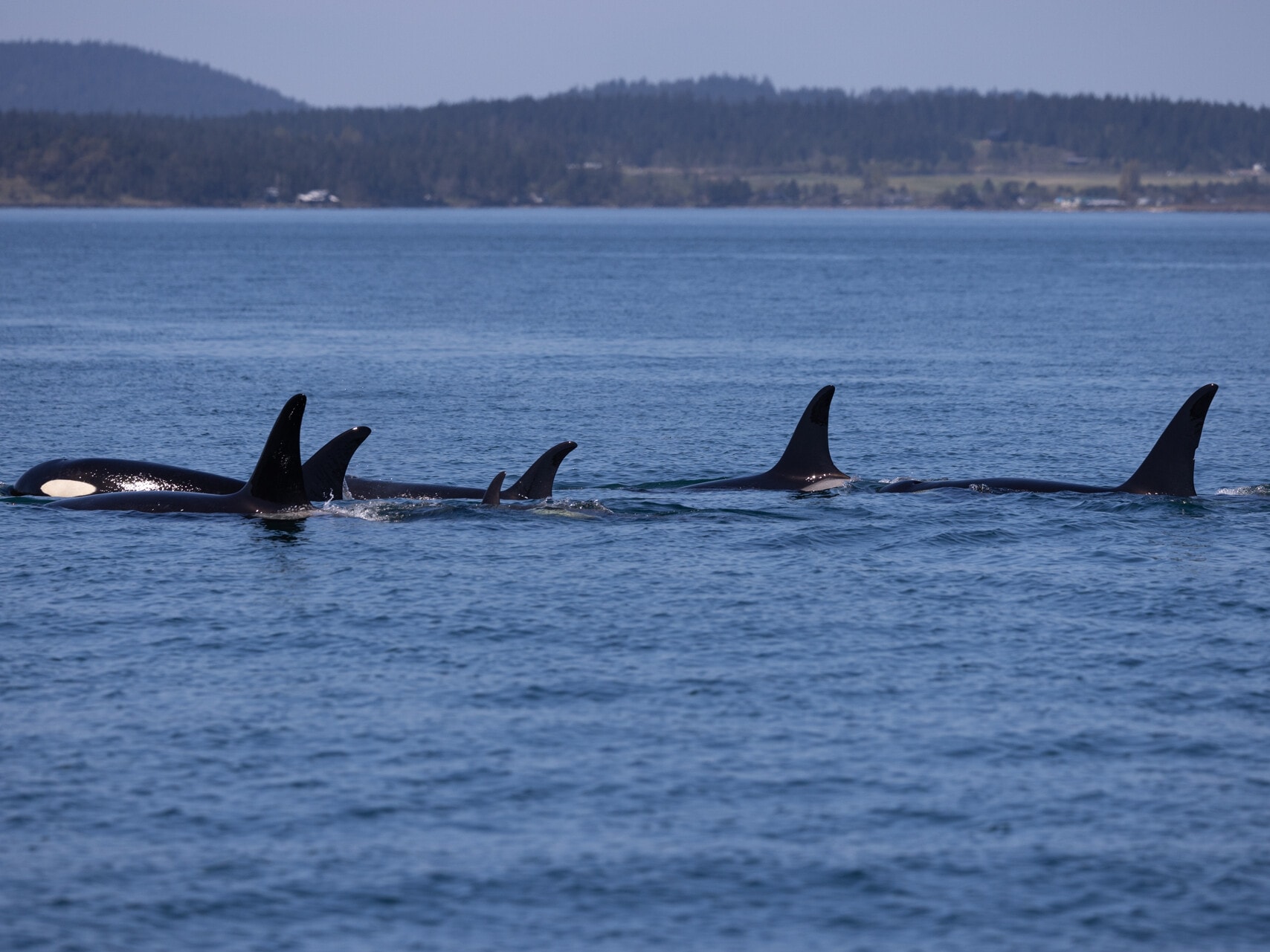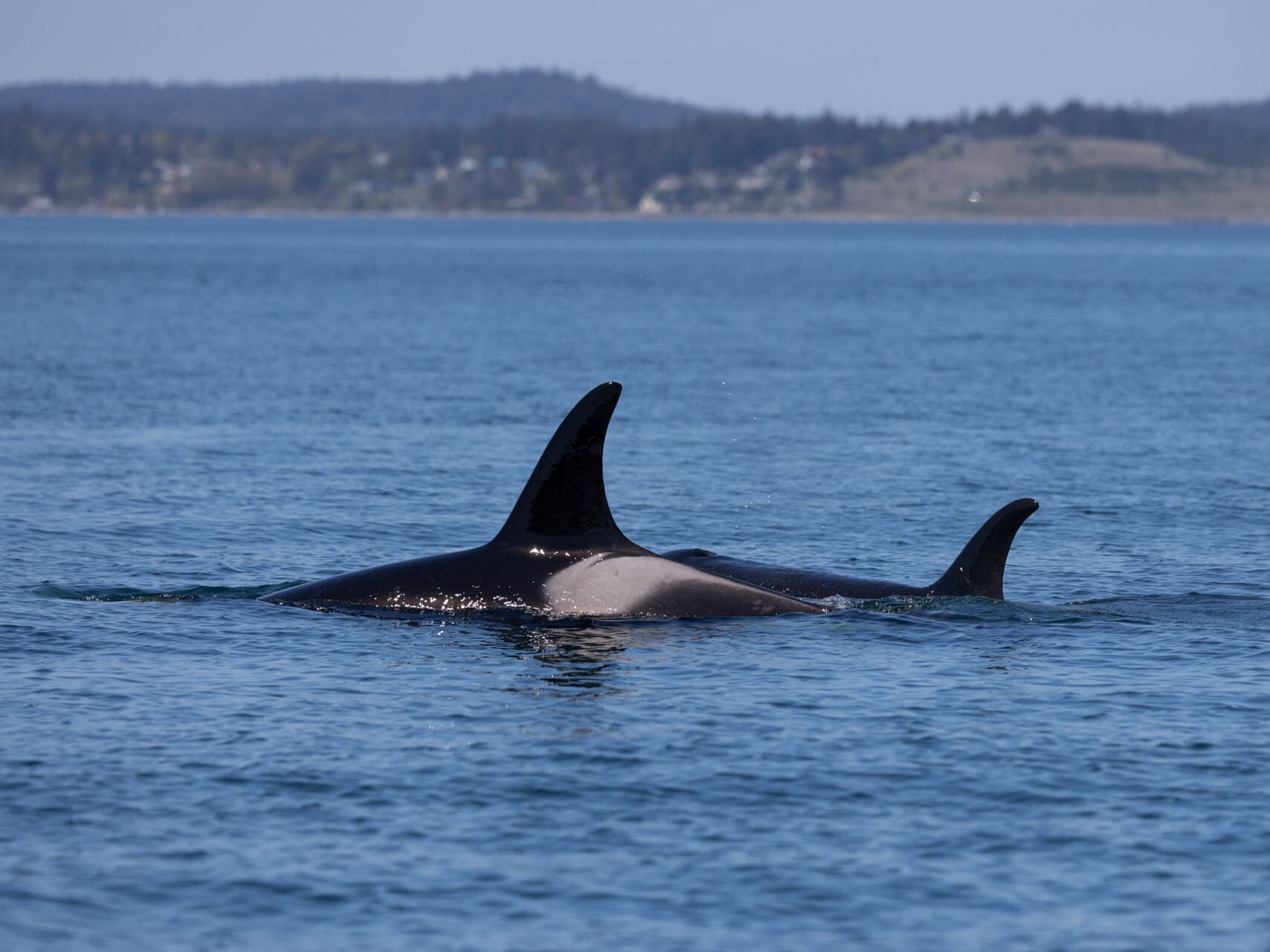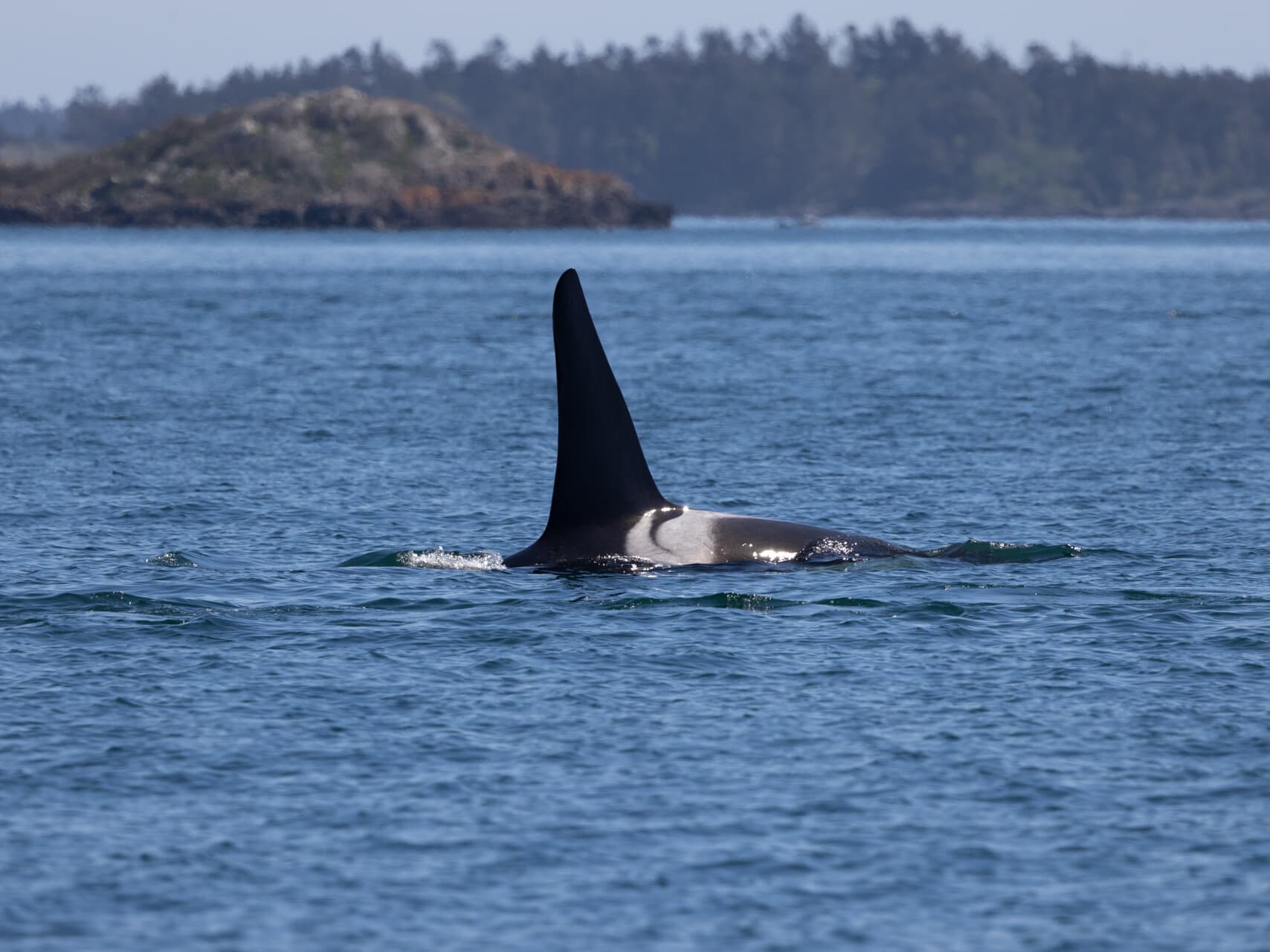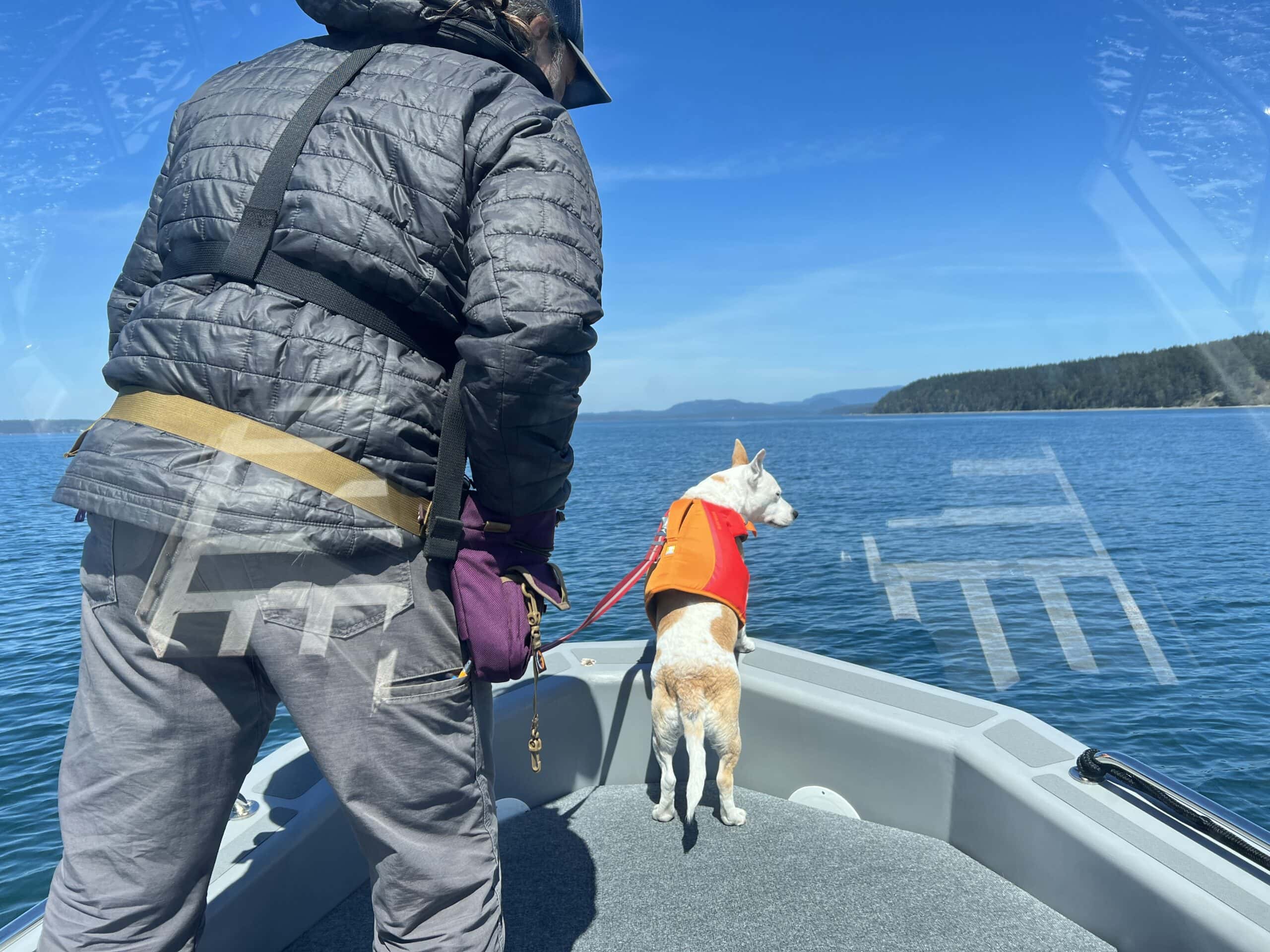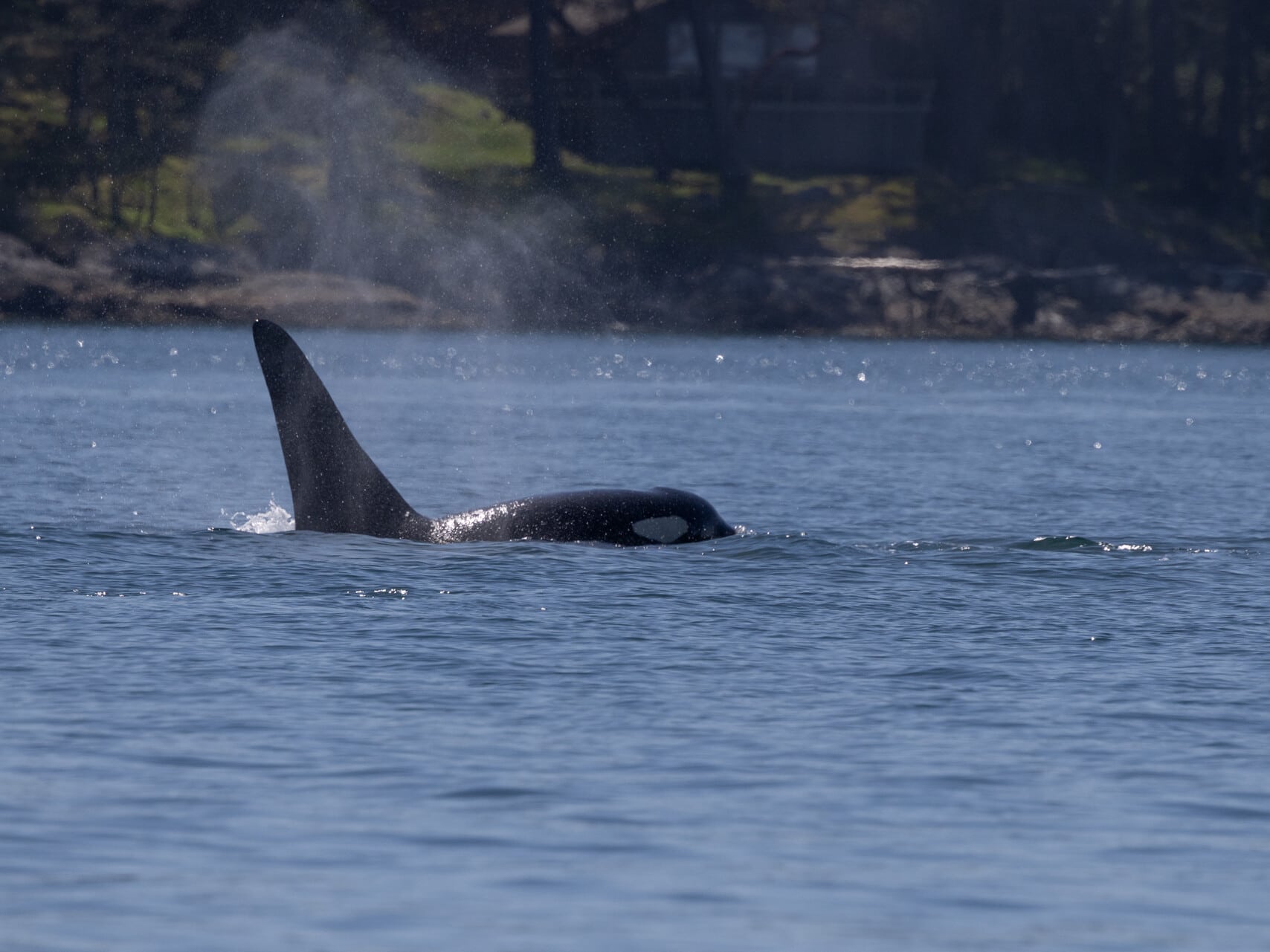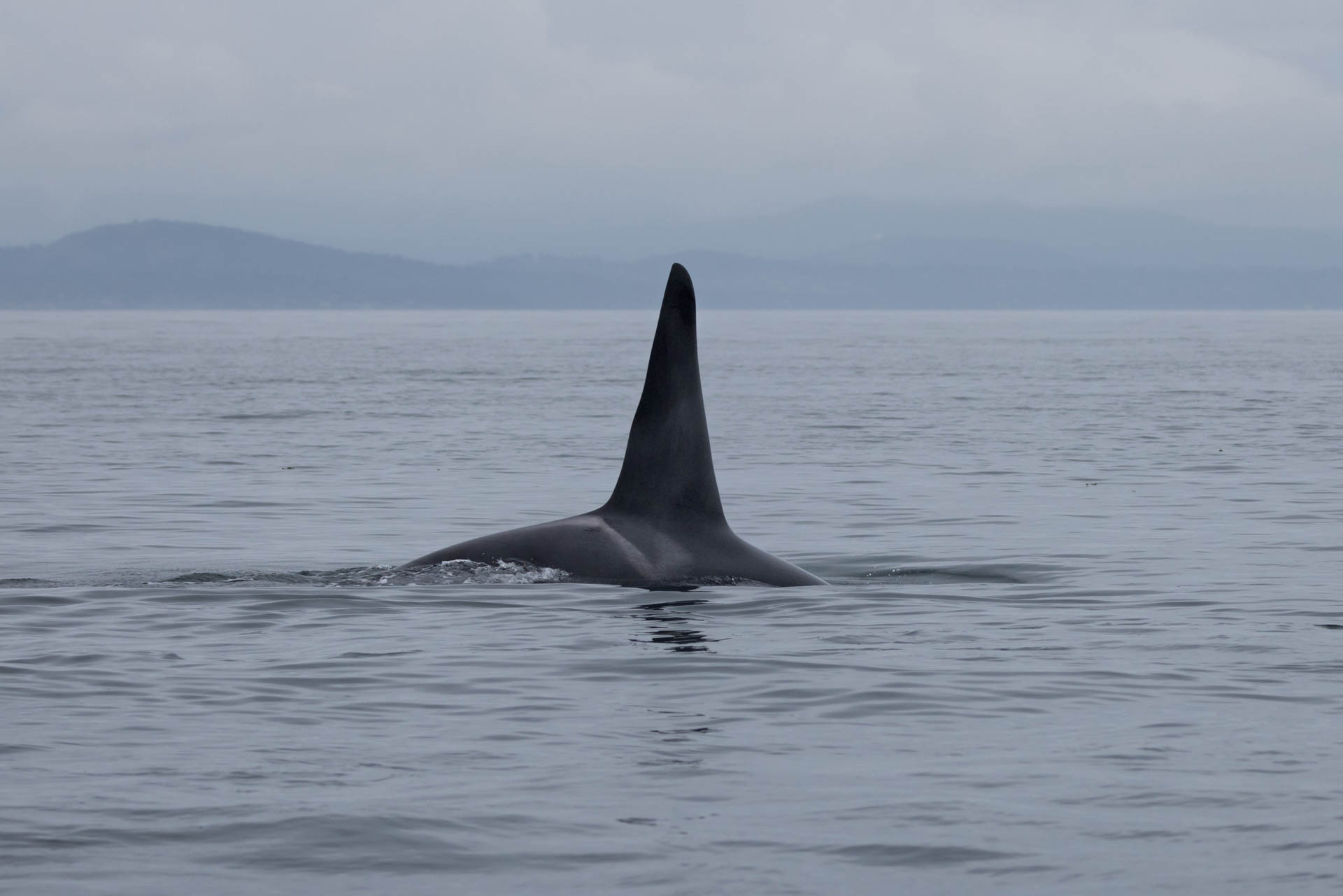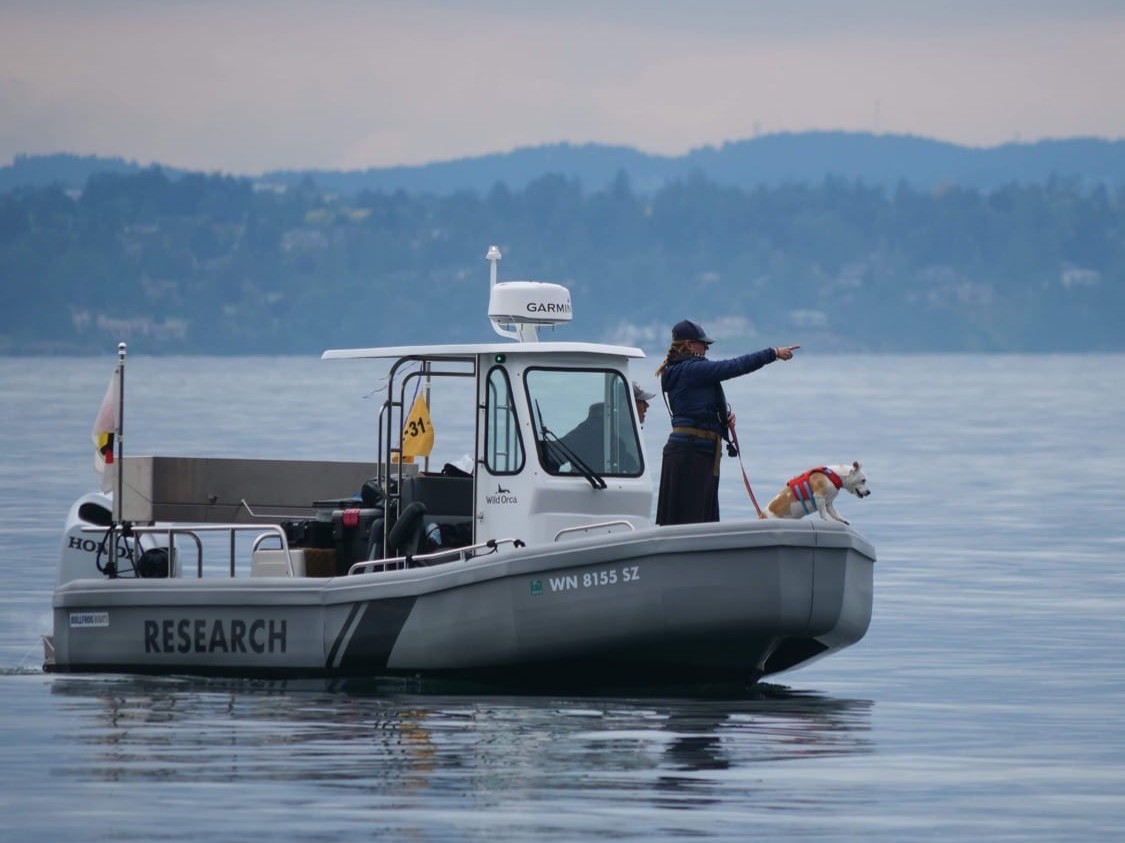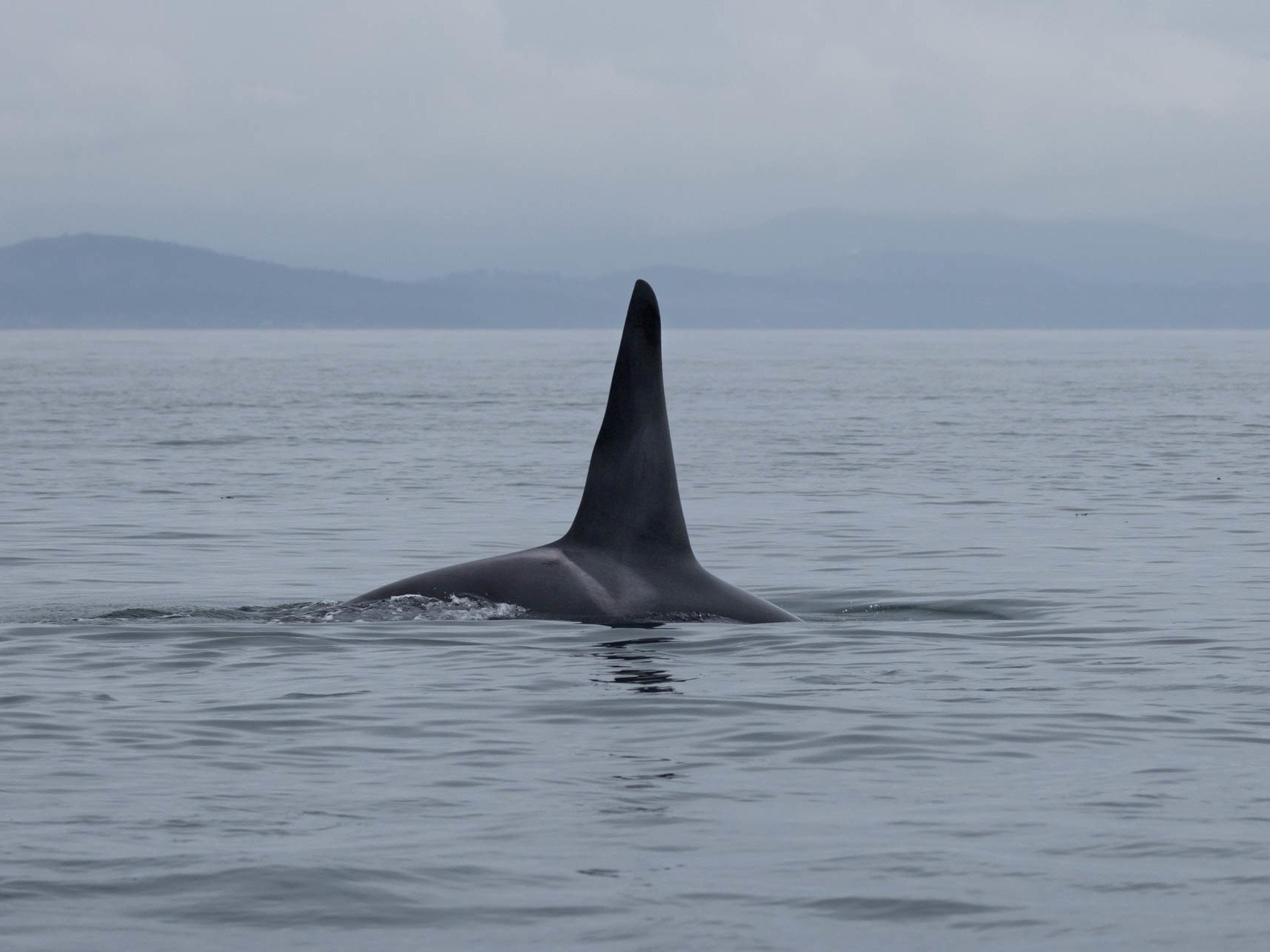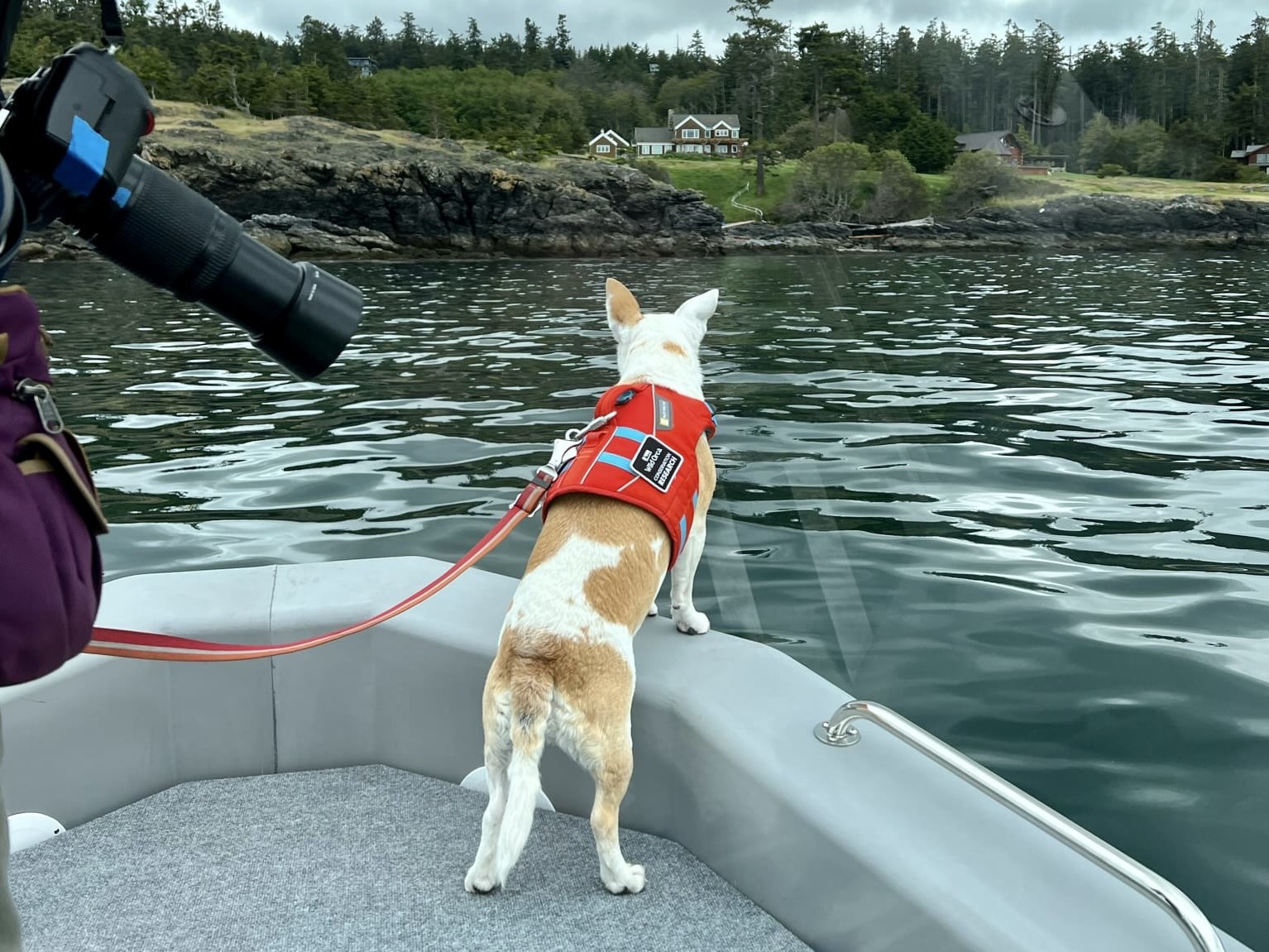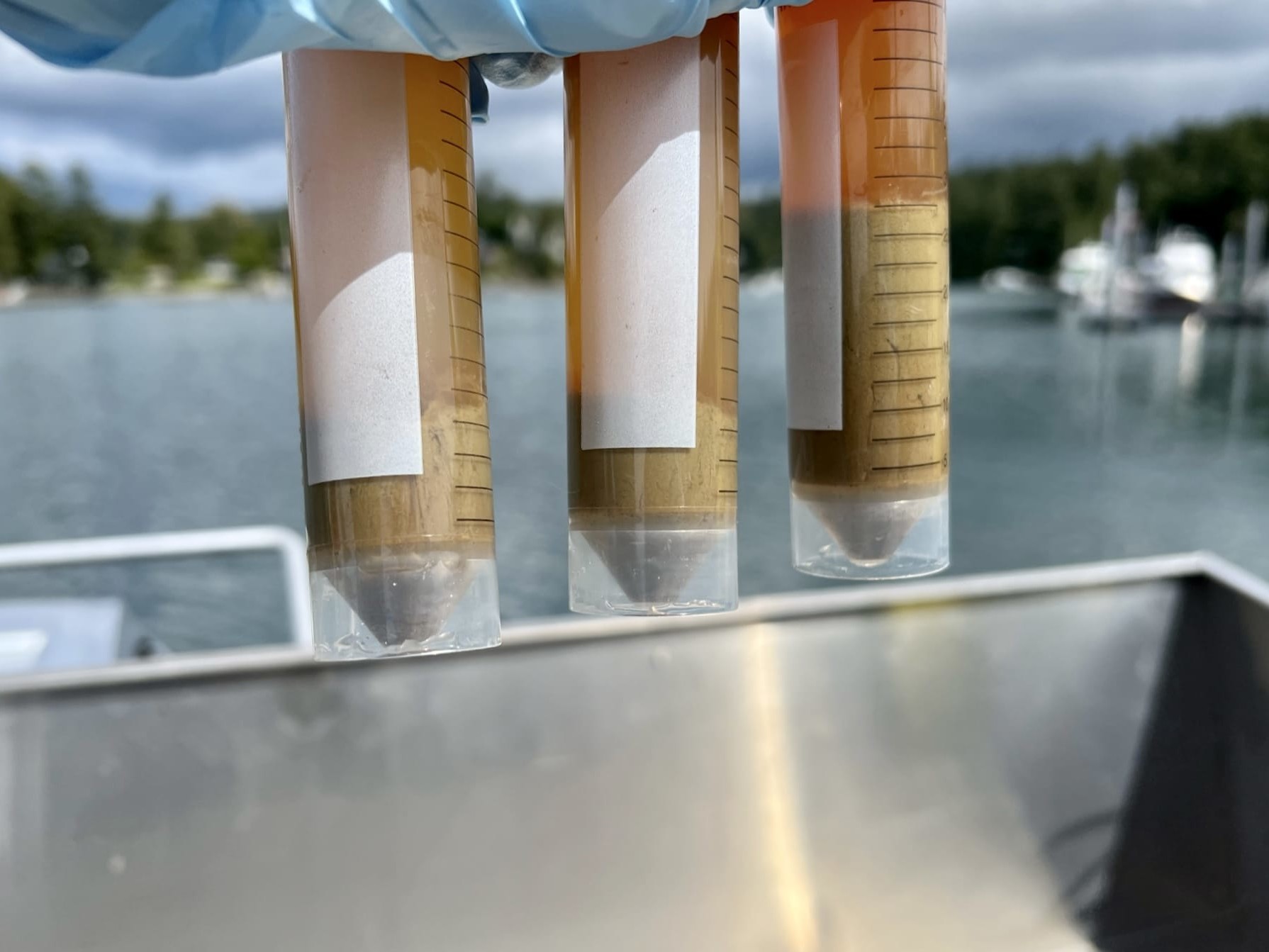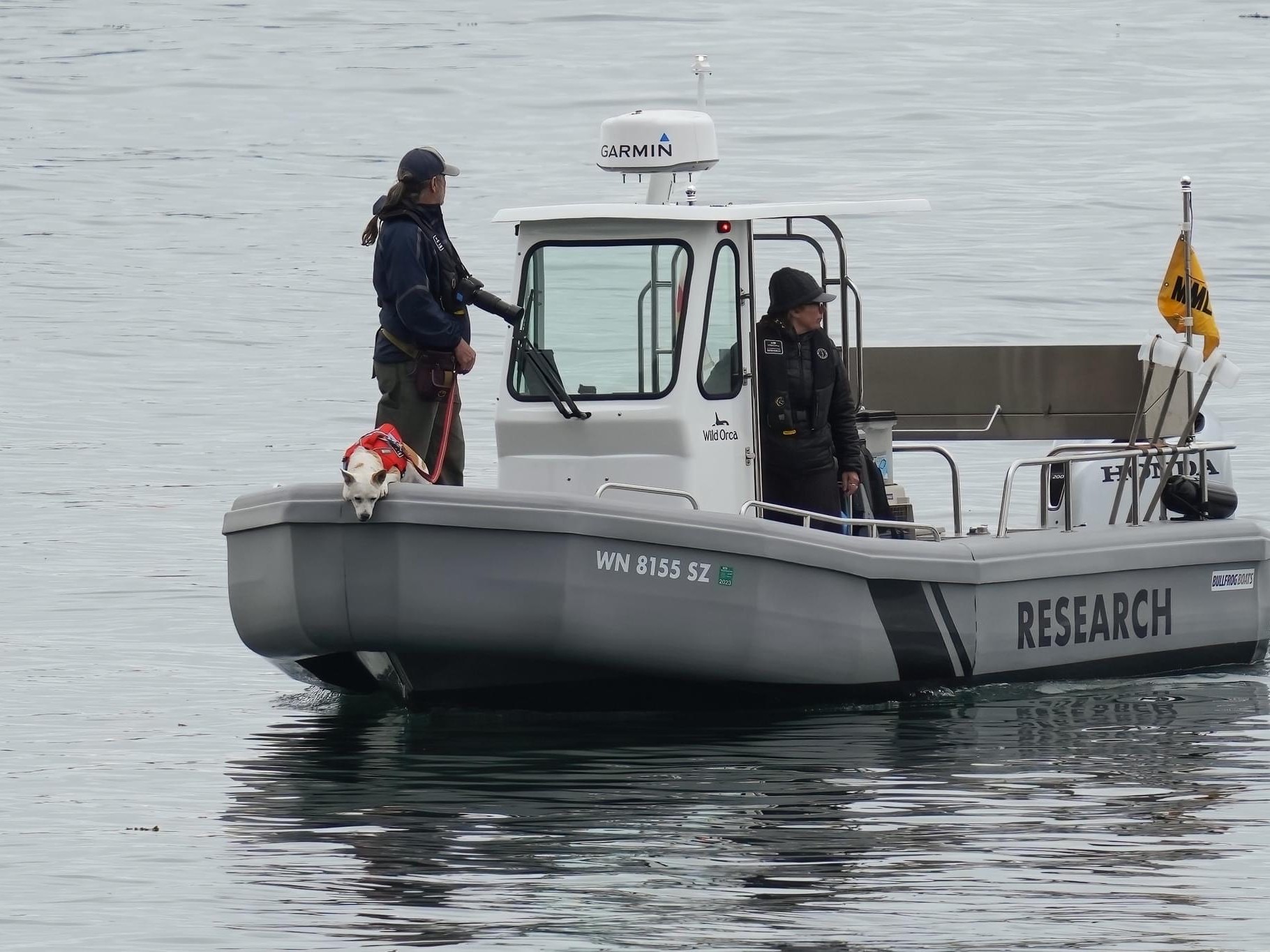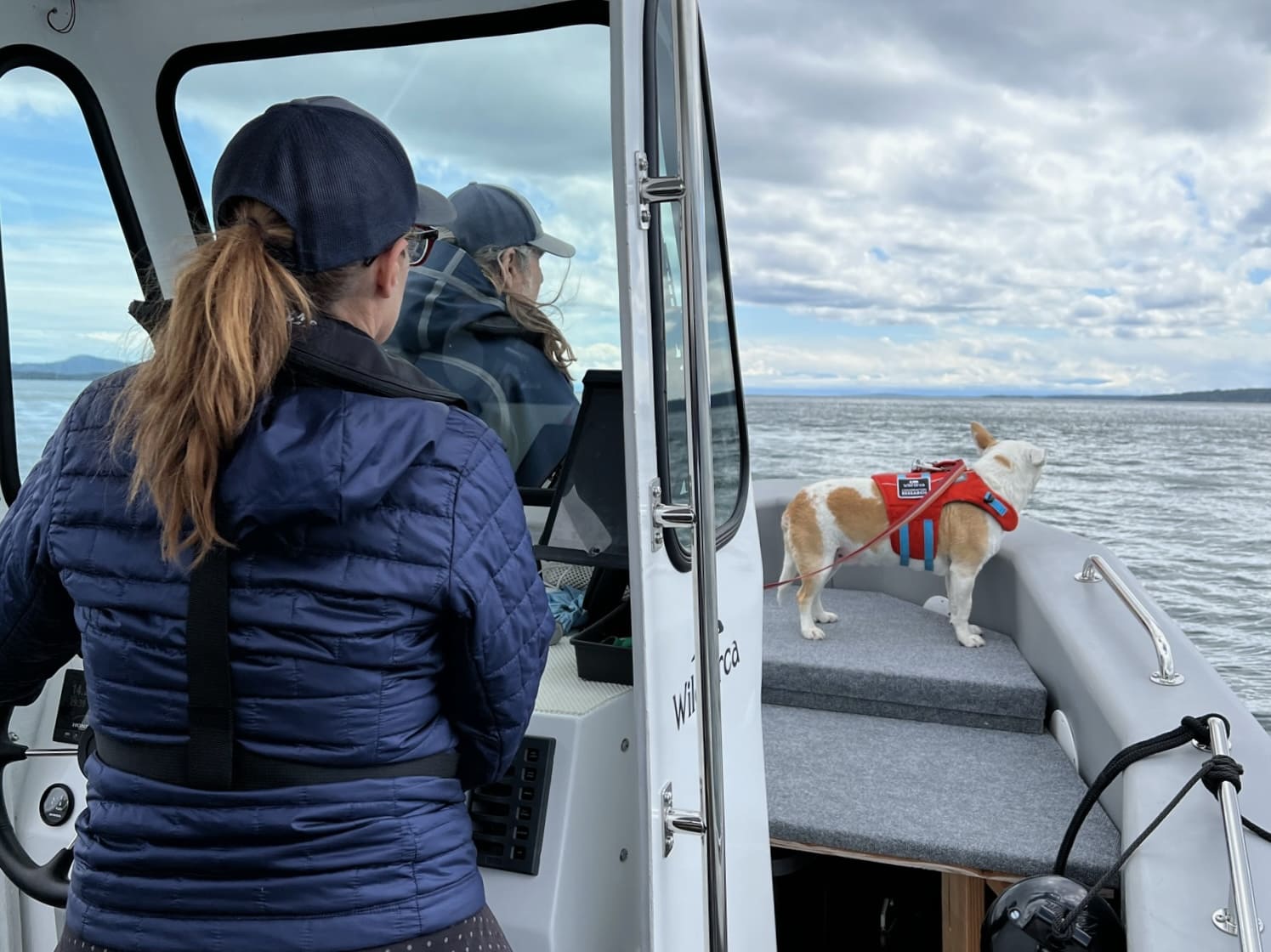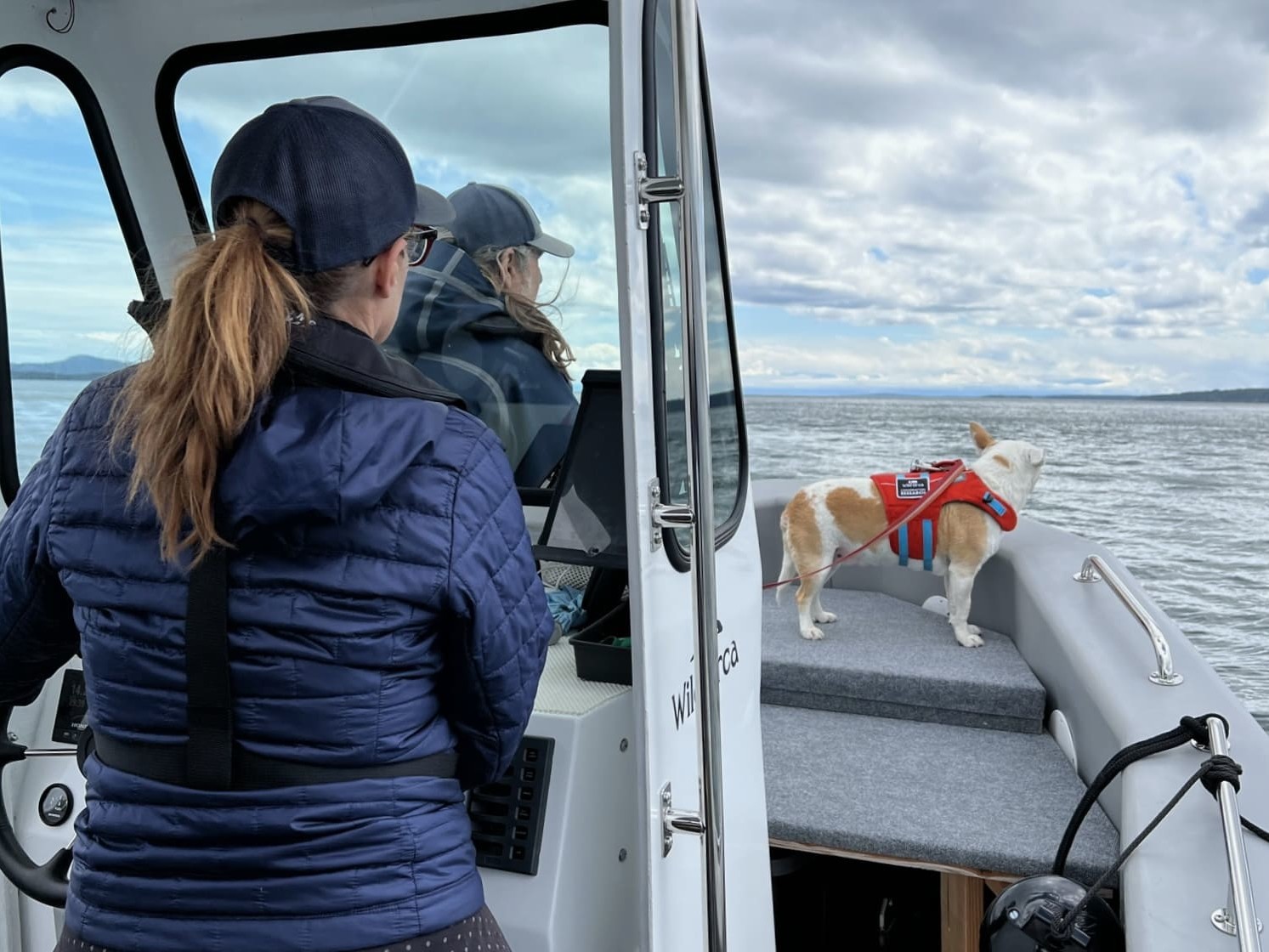J Pod
After receiving confirmation that the orcas spotted in San Juan Channel were Southern Resident killer whales, the team headed to the boat at Snug Harbor. While preparing the boat for the day, we received a report that four J pod whales were off Eagle Point. We headed down the west side of San Juan Island, even though the water conditions were rough, at least a three on the Beaufort scale, making our travel down the island quite rough. Despite our constant scanning for whale dorsal fins, we did not encounter any whales before turning north into Cattle Pass.
As we traveled North into San Juan Channel, Dave Ellifrit from the Center for Whale Research radioed to tell us he was heading back south to try to locate the J16 matriline and J22 matriline as he had not yet encountered them. Shortly after arriving on scene, we encountered a large group of whales with significantly better water conditions; we positioned ourselves downwind and to the side of whales from the J11, J14, and J19 matrilines.
Overall, the group was slow traveling and occasionally socializing or engaged in “logging” behavior most of the time we were with them. However, if one phrase could be used to describe the whales’ behavior during our time with them, it would be LONG DIVE TIMES! The amount of time the whales were underwater is more often documented with Bigg’s (Transient) mammal-eating killer whales. Predicting where the whales will resurface when they are on such long dives is harder.
We continued to search for fecal samples when the whales turned South and headed out of Cattle Pass towards Salmon Bank, but as the water was even more choppy than it was earlier, we decided to head back to our home port by going “up and over” San Juan Island via the more sheltered water of San Juan Channel.
Research Vessel
R/V Cheena
Species
Southern Resident Killer Whales
Pods
J Pod
Research Activities
Fecal Collection, Behavior Data, Health Assessment
J Pod
With an early morning notice that whales were on the west side of San Juan Island, the Wild Orca team departed Snug Harbor at 9:46 AM and headed down Haro Strait along the west side of San Juan Island. Whales were encountered just offshore of Hannah Heights at 10:15 in the morning.
With good wind, calm waters, the team was able to conduct distant lateral sampling behind and to the side of the whales’ path. With Eba’s keen nose, the research vessel is able to stay 300-1000 meters behind the whales which minimizes any potential disturbance.
In less than an hour the team located and collected the first sample of the day. Over the course of the next four hours Eba, Jim and Giles collected five additional samples. Many thanks to the Center for Whale Research drone team who notified us that one of the whales they were video documenting had defecated! We were able to make our way to that location and collect that valuable sample.
J Pod
We received a report that members of J Pod were heading towards east point on Saturna Island heading towards boundary pass around noon. We arrived at Snug Harbor at 1pm and departed from the dock shortly after. We travelled north up Haro Strait and found the first of the whales as they were porpoising south around Turn Point on Stuart Island. The whales were spread across the whole strait from Sydney Island back to Battleship Island in pairs or alone. We tried to track them but the water were not favorable and the whales were porpoising away from us so we close to wait back at the dock until conditions improved.
At 3:45 we once again departed from Snug Harbor with the hope of intersecting with the last of the whales heading south. We encountered a mother and calf pair on the west side of Henry Island near the bird rookery. We trailed that pair for about 20 minutes as they were foraging. Because our focal group included the youngest calf, J59 and her mom J37, we increased our following distance to minimize any chance of interference. The tide was still flooding and we were positioned well north of the whales in a position that would be optimal for detecting fecal samples in the water. We ended our research voyage as the mother and calf pair ended their foraging bout and began traveling south at fast speed.



